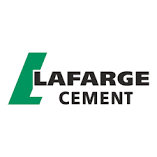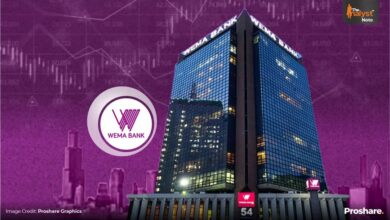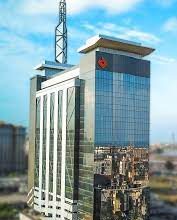Lafarge Africa H1 2023 Result: Suspension of Tax Relief Pulls Back Post-Tax Profit by -5.16%

Lafarge Africa defied economic headwinds in H1 2023 as profit before tax (PBT) and revenue rose by +18% and +5%, respectively, taking advantage of sizable foreign exchange gains and higher product prices. Surprisingly, unlike its competitors, the group had no FX loss due to the absence of foreign borrowings. The domestic borrowing structure supported a -24% drop in finance costs to N1.41bn from N1.86bn in H1 2022 and stronger net finance income at N3.03bn in H1 2023 from a loss of N1.67bn in H1 2022. Meanwhile, the revenue and pre-tax profit growth did not transfer to the post-tax profit as income tax expense spiked by 157%, cutting PAT by -5.16% to N35.47bn in H1 2023 from N37.4bn in H1 2022. The group benefitted from tax relief on one of its production lines in Mfamosing plant from January 2021, lowering the income tax deduction in the past two years. The pioneer tax relief ended December 31, 2022, justifying the sudden rise in tax deductions for the period. The decline in PAT suggests an insufficiency of revenue and a need to scale up top-line earnings to accommodate normal tax deductions to prevent a further fall in subsequent quarters.
The group’s liquidity rose in H1 2023, with working capital settling at N49.53bn and the current ratio rising to 0.97 from 0.70 in H1 2022. The rise reflected the clinker maker’s ability to cover its immediate obligations and secure cash to raise production.
Key Highlights
- The revenue grew by +5.95% (Y-o-Y) from N186.58bn in H1 2022 to N197.68bn in H1 2023.
- Profit before tax (PBT) appreciated by +18% to N55.31bn in H1 2023, while Profit after tax (PAT) declined (Y-o-Y) by -5.16% from N37.4bn in H1 2022 to N35.47n in H1 2023
- Basic earnings per share decline from N232 in H1 2022 to N220 in H1 2023
- Total equity increased by +4.88% (Y-o-Y) to N419.36bn in H1 2021 from N399.86bn in H1 2022
- Finance income increased by +2,215.32% (Y-o-Y) from N191.63m in H1 2022 to N4.23bn in H1 2023. While finance costs declined by -24.33%.
- Total assets rose by +15.26% from N568.0bn to N654.69bn in H1 2023
- Income tax expense grew by 157.80% from N6.75bn in H1 2022 to N17.41bn in H1 2023.
- Total Borrowings slightly increased by +5.75% to N38.69bn
Share Price Movement
Lafarge Cement’s share price movement showed noticeable volatility. The stock began at a steady N24 in January and maintained this level for a consecutive stretch. Subsequently, there was an uptick to N25.3, followed by a dip to N24.4. The price then experienced intermittent increases and decreases, oscillating between N24 and N26. Notably, a breakout rise occurred to N30.15 on July 7, indicating positive momentum. The price then settled around N25.5 before a more significant decline to N23.8. After this drop, the stock showed sporadic increases but stayed below N30. The overall trajectory suggests a mix of stability, short-term gains, and corrective phases, reflecting shifts in market sentiment, company performance, and industry dynamics. (See chart 1 below).
Chart 1:
Revenue
Lafarge showed a steady revenue growth, which rose slightly by 5.95% year-over-year (YoY) compared to the 28.67% posted in H1 2022. The slight increase could be attributed to the +7.16% recorded in the aggregate & concrete segment and +5.97% in the Cement segment, while other products, which represent the sales of mortar and power, saw a decline of -32.50%. (See chart 2 below)
Chart 2:
PBT
The fall in finance expense by -24.33%, alongside a +2,215.32% rise in finance income, stopped what would have been a low profit before tax, resulting in an 18% Y-o-Y growth in PBT. While PBT saw an upward push, Profit After Tax (PAT) dipped -5.16% to N35.47bn. The reduction was caused by a +157.8% increase in income tax expense, which rose from N9.46bn in H1 2022 to N19.83bn. (See chart 3 below)
Chart 3:
Liquidity Ratio
Lafarge’s liquidity ratio, a measure of its ability to cover short-term financial obligations with near cash assets, rose from 0.70 in H1 2022 to 0.97 in H1 2023. The rise suggests that the company improved its financial flexibility and strengthened its capacity to meet its immediate liabilities. Both short-term assets (excluding inventories) and short-term liabilities grew by +83.77% and +33.04%, respectively (See chart 4 below).
Chart 4:
Efficiency Ratio
Over the years, Lafarge Cement has consistently improved its asset turnover ratio, with an incremental increase of 0.04 annually. This positive trend resulted in a peak ratio of 0.33 in H1 2022. However, in the half year, the company saw a slight fall in the ratio, slipping to 0.30. Analysts linked the decline to a mild rise in cement, aggregate and concrete sales coupled with a -32.50% reduction in the sale of other products. (See chart 5 below)
Return on Equity
Lafarge Cement experienced a negative shift in profitability as its profit after tax decreased by -5% relative to shareholders’ equity. This decline directly impacted the company’s return on equity, reducing this metric to 8.46% during the first half of 2023. (See chart 6 below)
Chart 6:
Debt to Equity Ratio
The company’s consistent leverage ratio of 0.092 in both H1 2022 and H1 2023, despite a 5.75% growth in total debt and a 4.88% growth in total equity, indicates that the proportional relationship between the company’s debt and equity remained stable even as they both experienced growth. (See chart 7 below)
Chart 7:
Competitor Analysis of the Nigerian Cement Industry in H1 2023
Amidst naira devaluation and rising energy costs, the cement industry made N1.36trn in revenue in H1 2023, with the oldest cement producer contributing the highest percentage growth of +17.67%. Close behind, BUA Cement achieved a growth of +17.24%. In contrast, Lafarge reported the least revenue growth of +5.95%, reflecting a relatively modest expansion.
Analysts noted a difference in the financial statements as the cement maker faced the highest FX loss amongst the trio, coming to N113.6bn. The outcomes stemmed from foreign currency obligations created by the devaluation of the Naira in June 2023. Despite the hurdle, Dangote Cement’s earnings per share (eps) of N10.39 reflected a modest +2.9% increase. In contrast, BUA Cement encountered a loss of N2.13 billion, while Lafarge showcased an impressive immunity to foreign exchange losses, setting it apart.
Concerning profit before tax, Dangote Cement saw a sustained reduction in PBT for the second consecutive period, slumping by -9.45% to N239.86bn, while BUA Cement generated N76.42bn in H1 2023, or a +2.75% growth from its N74.37bn in H1 2022. Lafarge saw the largest growth of +18% over the period.
To strengthen Dangote’s working capital, which experienced a dip in H1 2023, the company introduced series 8 and 9 Commercial Papers. This move followed an expansion of the CP program from N150bn to N300bn, with the generated funds allocated to support working capital needs. Dangote Cement carefully assesses market conditions to determine the opportune moment for proceeding with tranche two of the share buyback initiative. Meanwhile, BUA Cement has rebounded from a history of negative working capital, now showcasing a robust N132.47bn working capital figure, surpassing Lafarge Cement’s N49.53bn.
Based on the data available, BUA Cement recorded the highest Finance cost, soaring by +179.8%, attributed to a rise of +228.70% in interest expenses. On the other hand, Lafarge saw a reduction in finance costs by -24.33%. Similarly, Dangote showed a +42.95% rise in finance costs and a +43.4% rise in interest expenses.
Regarding return on equity, Dangote Cement has the highest ROE at 0.14, indicating its ability to generate a return of 14% for every unit of shareholder equity invested. BUA Cement follows closely with an ROE of 0.13, implying a 13% return on equity. Lafarge Cement lags its counterparts with an ROE of 0.085 or 8.5%. (See Chart 8).
Chart 8:
End Note:
Lafarge has had a topsy-turvy few years as the Nigerian operating environment has changed glacially based on a variety of economic headwinds. The company has equally had to contain difficulties concerning the movement of top personnel. However, despite the challenges the company’s underlying business has remained strong in specific areas with room for improvements in others. For example, the company’s return on equity needs to improve to compete favourably with its market peers, working capital needs to strengthen (even though it is better than Dangote’s negative working capital of around a quarter of a billion naira). Lafarge’s profit before tax growth has been impressive in recent quarters, but fear persists that with a softening Nigerian economy, sales growth may begin to slouch and earnings numbers dip in H2 2023. On the balance of evidence, Lafarge, nevertheless, still presents a pretty financial picture.




